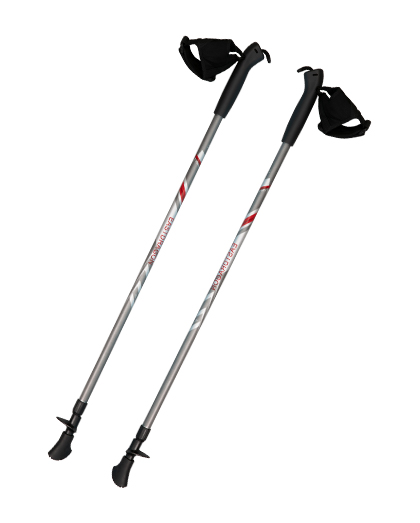

Trekking sticks are an indispensable hiking accessory which serve to help walkers have greater stability on rocky terrain and to offer balance on rough surfaces. While some trekkers prefer trekking sticks made of cedar, many trekkers favor trekking sticks made from aluminum or carbon fiber materials. There are basically two types of trekking sticks: the one which is carried on the trekking backpack and the one which are carried on the trekking pole. They differ in terms of weight, length, head size, handle size, etc. Some trekking sticks include metal pins on their bases, which are tied at the very end of the stick to form a secure hold. On the other hand, some trekking sticks do not have such ends.
While trekking poles serve to support the trekking stick and stabilize it on the ground, trekking straps are used to attach trekking poles to the strap and thus to keep the trekking stick steady on the surface of the trekking path. There are different types of trekking straps available in the market, each one designed to meet specific trekking needs. For instance, there are those designed to fit the extra long trekking poles, while others have handles which are made of flexible nylon. The nylon strap has a special design that allows hands to move freely and thus minimizes the possibility of the hands getting trapped in the grip of the strap.
Another important feature of trekking sticks and trekking poles is the ability to retract them when they are not being used. This can be done manually or by using an automatic mechanism. In manual retracting, the trekking pole is simply placed behind the backpack and the strap or the loop on the trekking pole is manually released. In automatic retracting, the trekking pole is connected to a device which causes the stick to be pulled back by a mechanical pressure.
One important thing to remember while using trekking sticks and trekking poles is to take precaution when moving from one plateau to another. After all, the goal of trekking is not to walk blindly and cover incredible distances. A trekking pole does not have a back and so should be treated with caution. Also, wear comfortable hiking boots as you will be walking for long distances. If possible, carry extra trekking supplies, like extra trekking poles, a trekking strap, a compass and a first aid kit, so that you do not have to carry much material with you while trekking.
It is possible to buy trekking sticks and trekking poles from most sports stores. The internet also offers a wide variety of trekking supplies, which can be bought online or by post. But before you go trekking, check out the weather forecast and choose a good site that offers trekking tours at reasonable prices. While trekking, ensure that you carry enough food provisions and water to last for the entire trekking journey.
When trekking, it is important to carry a sufficient quantity of food and water. Also carry some extra clothes that you may not need to trek trip. One important thing to note is that trekking sticks help to take the pressure off your hands while walking and trekking poles help to keep the weight of your body and the other materials you are carrying on the trekking expedition. Hence, it becomes essential to choose a proper trekking trip destination and then buy the appropriate trekking equipment required to trek successfully.
